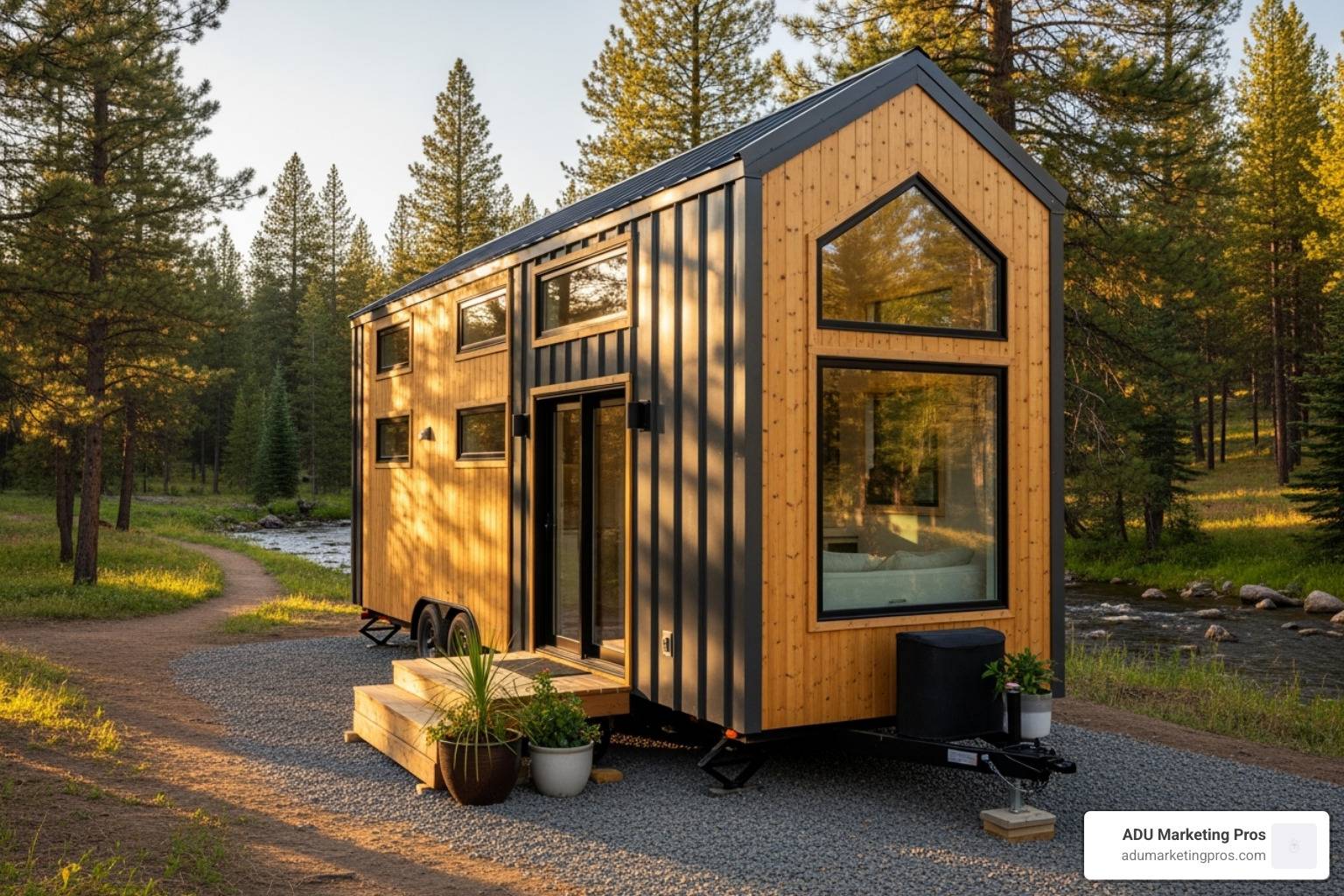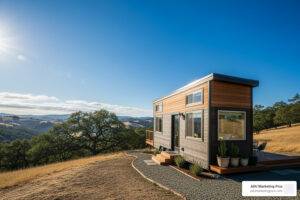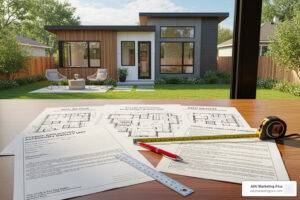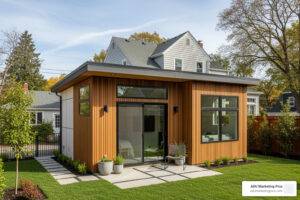Why Everyone’s Talking About Tiny Homes
In an era defined by a search for more sustainable, affordable, and meaningful ways of living, the tiny home movement has captured the public imagination. More than just a housing trend, it represents a significant cultural shift away from the “bigger is better” mentality. The conversation around tiny home prices has become particularly intense as individuals and families seek viable alternatives to a conventional housing market that feels increasingly out of reach. This article serves as your comprehensive guide to understanding the true cost of tiny living in 2024.
Here’s a quick overview of what you can expect to pay:
Quick Price Overview:
- DIY builds: $30,000 – $70,000
- Professional builds: $80,000 – $200,000+
- Cost per square foot: $280 – $400 (compared to $150 for traditional homes)
- Luxury models: $150,000 – $400,000+
Especially in states like California, where the median home price can soar past $800,000, tiny homes offer a tangible path to homeownership without the burden of a crippling 30-year mortgage. However, the journey to tiny living is paved with financial decisions. The final cost can vary dramatically, from a modest DIY shell built for under $15,000 to a professionally crafted, high-end custom model exceeding $300,000. The appeal is undeniable: the promise of financial freedom, a smaller environmental footprint, and a life simplified to its essentials. Yet, many prospective owners underestimate the full scope of the costs involved.
This article will deconstruct tiny home prices from the ground up. We will explore the average costs for different build types, break down the specific factors that influence the price tag, uncover the often-overlooked hidden expenses, and answer your most pressing questions. Every choice, from the foundation to the faucets, has a budgetary impact, and hidden costs like land, permits, and utility connections can add tens of thousands to your initial estimate. Let’s get a clear picture of what it truly costs to join the tiny home movement.
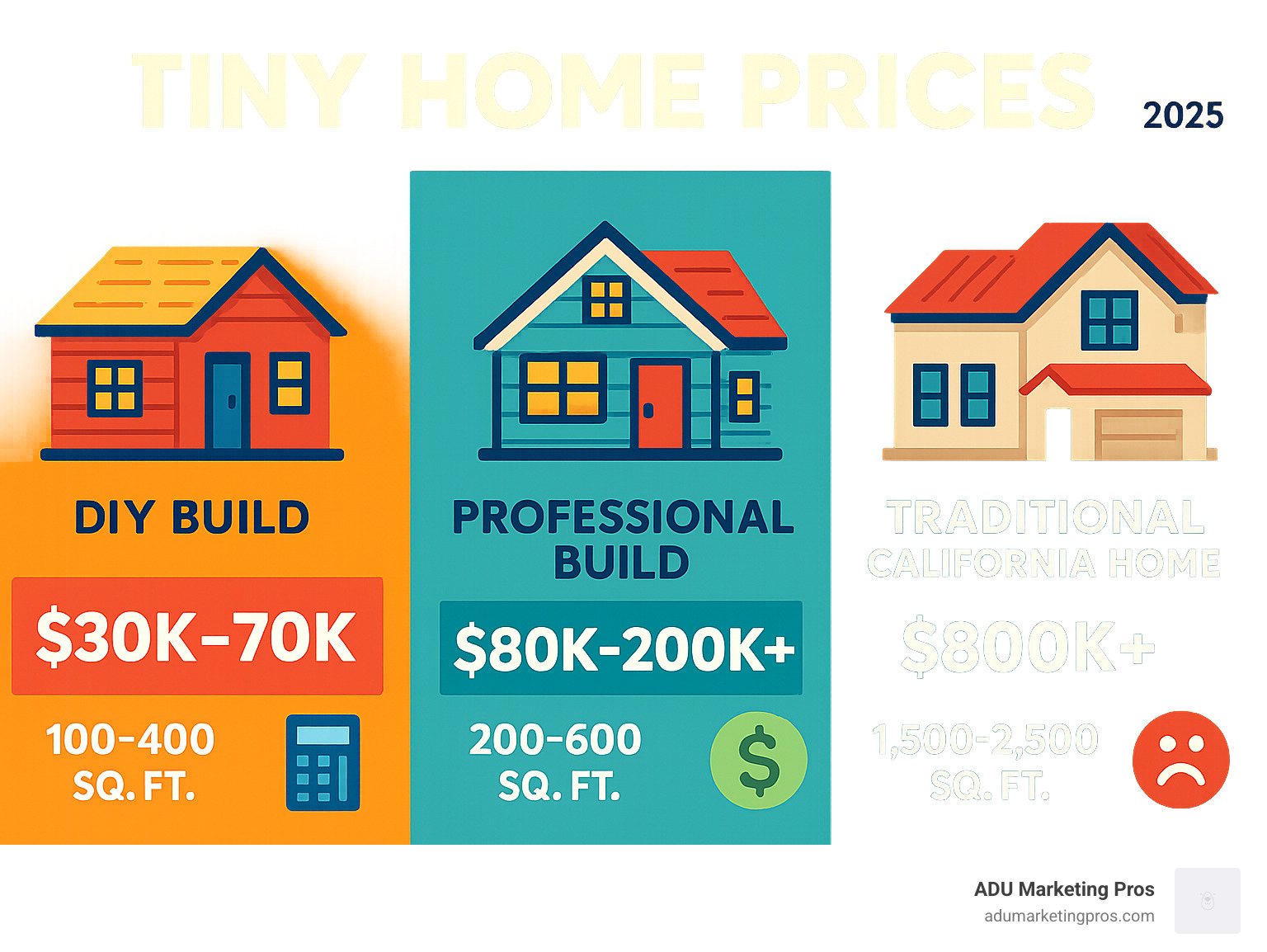
Find more about tiny home prices:
- architects in southern california who design tiny houses
- land for sale in southern california for tiny houses
- tiny house builders in southern california
The Big Picture: Average Tiny Home Prices in 2024
Discussing tiny home prices is like asking about the cost of a car—the answer depends entirely on whether you’re looking for a basic sedan or a luxury sports car. In 2024, the average price for a tiny home falls within a wide spectrum of $30,000 to $150,000, but the beauty of the movement is that there are viable options for nearly every budget.
One of the most surprising statistics for newcomers is the cost per square foot. While a traditional home averages around $150 per square foot, a tiny home can be double that, often landing near $300 per square foot. This isn’t a sign of inefficiency; it’s a reflection of concentration. A tiny home packs all the complex, expensive components of a house—kitchen, bathroom, plumbing, electrical systems—into a much smaller footprint. Furthermore, it requires specialized, often custom-built, features like multi-functional furniture, compact high-efficiency appliances, and clever storage solutions to make the space livable, all of which demand skilled labor and drive up the cost for each precious square foot.
Let’s explore the different paths to acquiring a tiny home and the typical costs associated with each.
DIY Builds: For the Hands-On Dreamer
For those with the skills, time, and determination, a Do-It-Yourself build is the most affordable route, with typical costs ranging from $15,000 to $45,000. The primary saving is on labor, which can account for up to 60% of a professional build’s cost. This path offers ultimate control over design and materials. However, it’s a significant undertaking, requiring proficiency in carpentry, plumbing, and electrical work. Incredibly resourceful builders have even completed functional homes for as little as $4,000 to $10,000 by diligently sourcing reclaimed or free materials over an extended period.
Prefabricated Homes & Kits: The Middle Ground
Prefabricated options offer a balance between DIY and professional builds. The most basic option is a shell kit, which provides the home’s exterior structure. These start as low as $4,000 to $10,000 for a simple frame and sheathing. However, buyers must budget an additional $5,000 to $15,000 or more for essential components like windows, doors, roofing, insulation, and interior finishing. A more complete option is a fully prefabricated or modular tiny home, built in a factory and delivered to your site. These typically range from $30,000 to $100,000, with some high-end, feature-rich models reaching $180,000.
Professional Builds: Turnkey Convenience
For those who want their tiny home vision realized without picking up a hammer, a professional build is the ideal choice. These turnkey homes average between $50,000 and $150,000. A mid-range, professionally built tiny home might cost between $150,000 and $190,000, delivering a beautiful, move-in-ready dwelling. The premium price pays for expertise, project management, and, crucially, certifications like RVIA (Recreational Vehicle Industry Association) or NOAH (National Organization of Alternative Housing). These certifications are often essential for securing financing, insurance, and legal parking.
Luxury Models: Tiny, But Mighty and High-End
Proving that small spaces can be incredibly sophisticated, luxury tiny homes cater to those who want high-end finishes, cutting-edge technology, and bespoke design. Prices for these models generally start around $70,000 and can easily climb past $150,000, with some truly unique custom builds exceeding $200,000. A ‘Designer Build’ package, focusing on premium aesthetics and custom furniture, might add $20,000 to a base price, while a ‘Luxury Build’ with top-of-the-line appliances, smart home automation, and off-grid capabilities could add $40,000 or more.
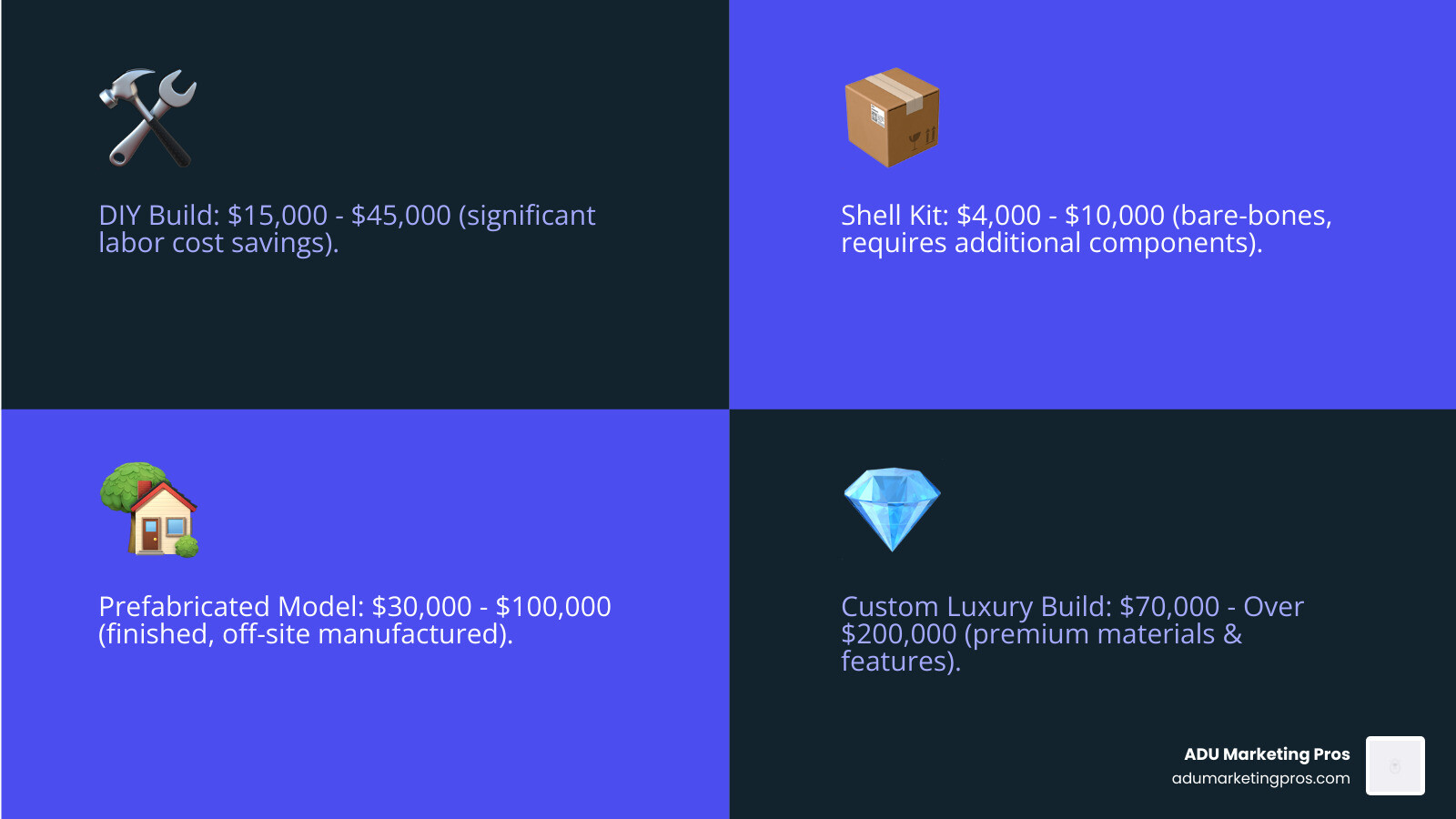
When you compare these tiny home prices to the staggering cost of traditional real estate, the financial appeal is undeniable. In 2022, the average tiny home cost was around $67,000, a fraction of the average traditional home cost of $513,400. This vast difference is the primary driver fueling the widespread interest in tiny living.
Deconstructing the Cost: What Factors Influence Tiny Home Prices?
To create an accurate budget, you must understand the individual components that make up the total tiny home prices. It’s not a single purchase but a collection of choices, each with its own cost implications. From the very first decision about its foundation to the last cabinet handle, every detail matters.
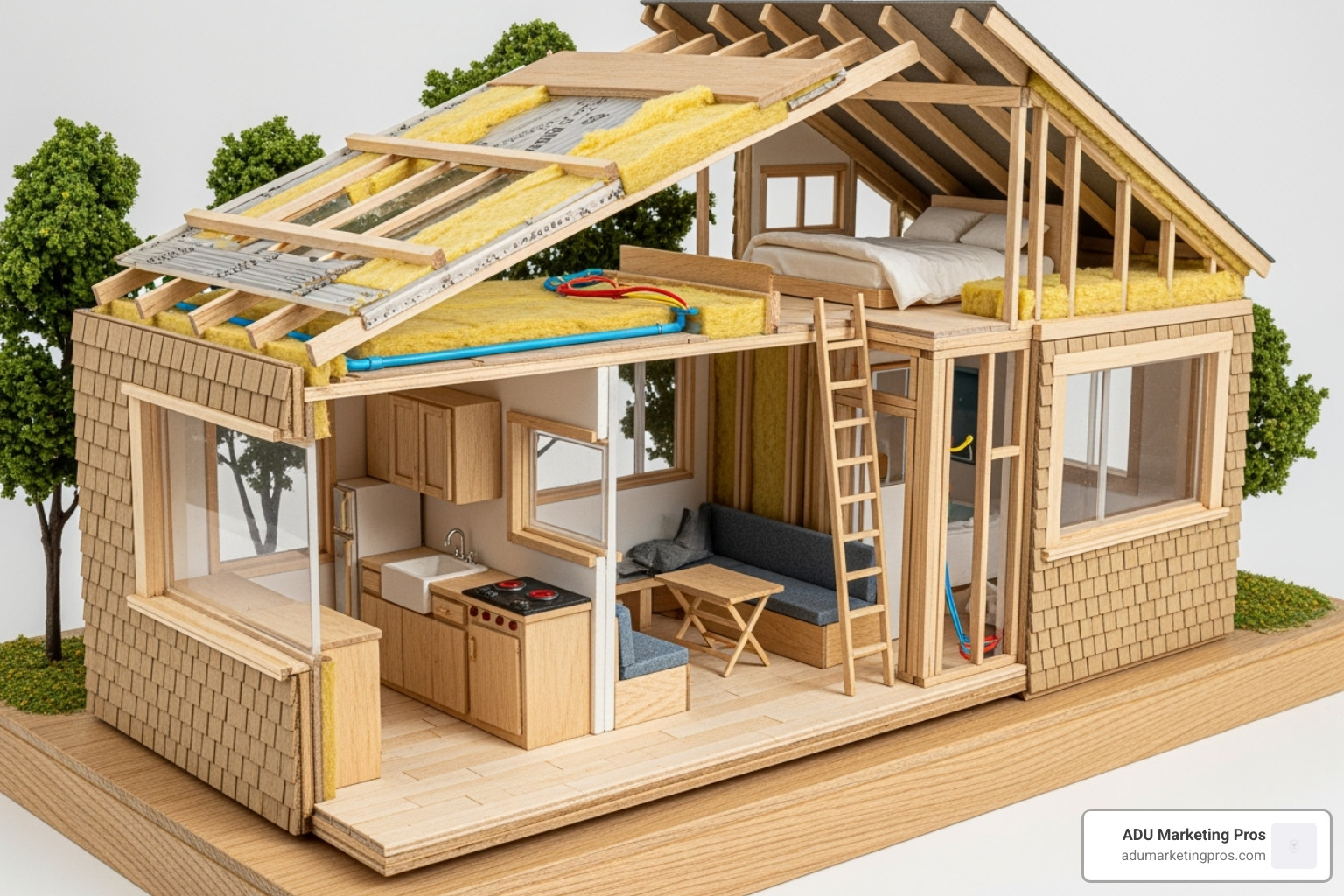
This section breaks down the key variables that will determine the final price tag of your tiny home.
Size and Foundation: Wheels vs. Permanent
The most apparent cost factor is size. A smaller home under 200 square feet can often be built for under $25,000 with a DIY approach, while costs climb significantly for homes over 300 square feet. Equally important is the foundation choice:
- Tiny House on Wheels (THOW): This is the most popular approach. The specialized trailer it’s built on costs between $4,500 and $9,000 and serves as the foundation. This mobility is a key advantage, and it often classifies the home as a Recreational Vehicle (RV), which can simplify zoning and placement regulations.
- Permanent Foundation: For a stationary home, a foundation can cost $3,000 to $9,000 or more, depending on the type (e.g., concrete slab, crawl space, or piers). This makes the structure a permanent dwelling or Accessory Dwelling Unit (ADU), which can increase its long-term property value but ties it to a single location and subjects it to local building codes. For more on this, see our guide on ADU vs Tiny House.
Build Type: DIY, Kit, or Professional Builder?
Your level of involvement in the construction has the single largest impact on the final tiny home prices.
- DIY Build: The most economical path ($15,000 – $45,000), this option eliminates labor costs but demands a massive investment of time (often 800-1,500 hours) and a broad skill set.
- Tiny Home Kits: A middle path, kits ($4,000 – $10,000+ for a basic shell) simplify the building process. However, it’s crucial to verify what’s included. The cost to finish the interior, including plumbing, electrical, and insulation, can add another $5,000 to $15,000.
- Professional Builders: Hiring a certified builder ($50,000 – $150,000+) provides expertise, efficiency, and peace of mind. They handle the complexities of construction and can provide essential certifications (RVIA, NOAH) that are critical for securing financing and insurance. Explore reputable Tiny House Builders California for guidance.
Materials and Finishes: From Budget to Boujee
Materials and finishes are the heart of your home’s character and can represent 30-50% of your total budget, typically ranging from $14,000 to $52,000.
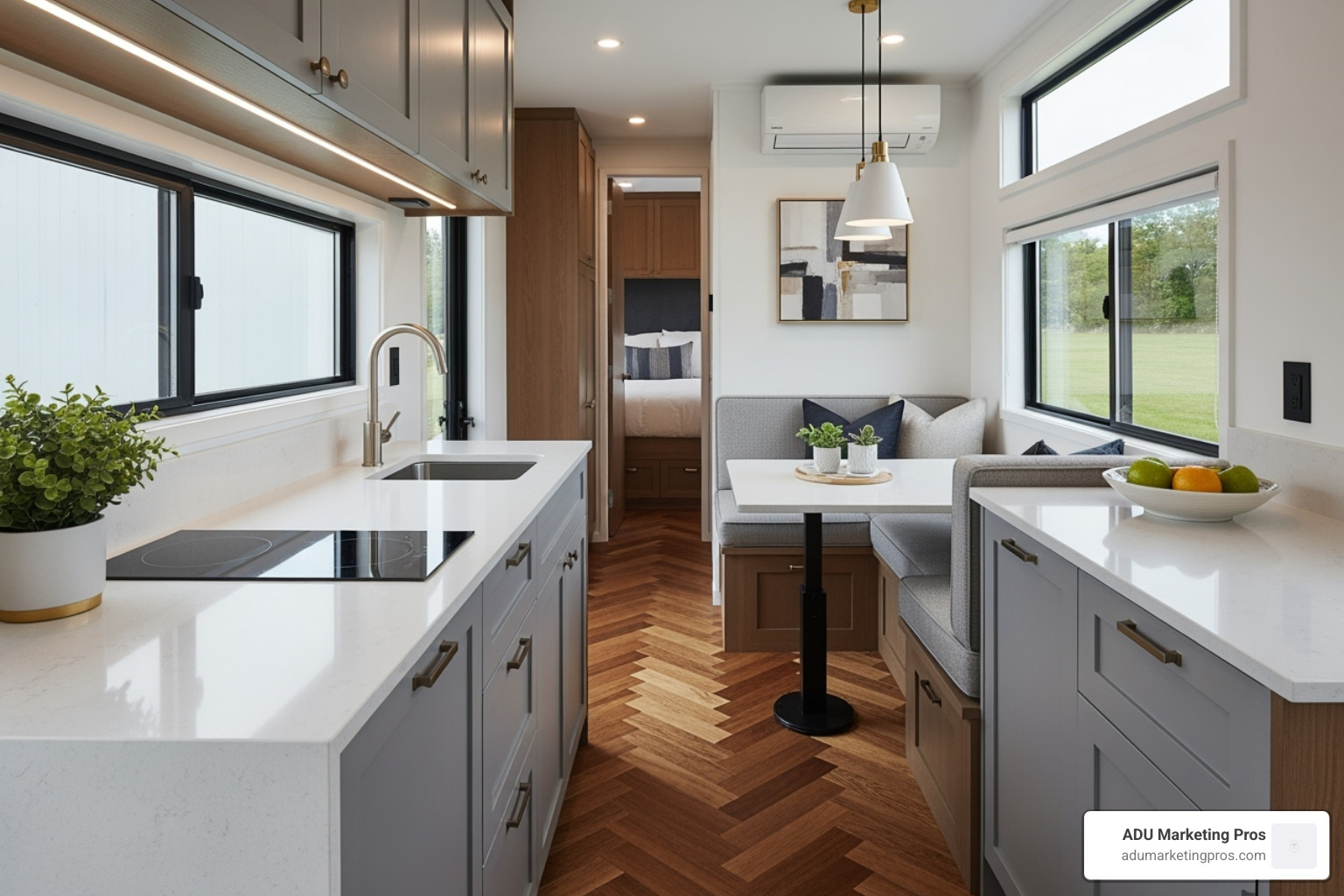
Here’s a more detailed breakdown of potential material costs:
- Framing: Wood framing is standard ($1,000 – $5,000), while steel framing is more expensive but offers superior durability and resistance to pests and mold.
- Roofing: Asphalt shingles are cheapest, but metal roofing ($500 – $2,000) is more popular for its longevity and modern aesthetic.
- Siding: Vinyl is a budget option, while wood or composite siding ($1,000 – $2,500) offers better durability and appearance.
- Insulation: This is critical for comfort and energy efficiency. Options range from fiberglass batts to rigid foam boards, with high-performance spray foam insulation ($1,000 – $3,000) being a popular, albeit more expensive, choice for its high R-value and air-sealing properties.
- Interior Finishes: This category varies wildly, from basic plywood walls to custom millwork. Flooring can range from inexpensive vinyl plank ($300) to reclaimed hardwood ($1,000+).
Using reclaimed or salvaged materials is a fantastic way to reduce costs and add unique character, a core principle you can learn more about in our guide on Eco-Friendly Small Homes.
Customization and High-End Amenities
Custom features are what transform a small space into a highly functional home, but they can significantly increase tiny home prices.
- Luxury Appliances: Compact, high-end appliances from brands like Smeg or Bosch can cost far more than standard models ($1,000 – $4,000).
- Smart Home Technology: Integrating systems for lighting, climate, and security adds convenience but also thousands to the budget.
- Custom Storage: Bespoke, built-in furniture and clever storage solutions are essential in a tiny home but are much pricier than off-the-shelf options.
- Aesthetic Upgrades: Features like folding glass walls, skylights, fireplaces, and premium countertops in quartz or granite can add $20,000 to $40,000+ to the final price.
- Off-Grid Systems: Achieving self-sufficiency comes with a significant upfront cost. A complete solar power system (panels, batteries, inverter, charge controller) can cost $5,000 – $15,000. Composting toilets ($900 – $2,000) and rainwater harvesting systems with filtration add to this cost but can lead to long-term savings and freedom. Learn more about Solar panel costs.
Beyond the Build: Uncovering Hidden and Ongoing Costs
The sticker price of a tiny home, whether built or bought, is only part of the financial story. To get a true handle on your total tiny home prices, you must budget for the crucial expenses that arise after the construction is complete. Overlooking these costs can turn a dream of affordable living into a financial strain.
The Land Question: Buying vs. Renting
Your tiny home needs a place to call home, and this is one of the most significant and variable post-build costs.
- Buying Land: This provides the most security and freedom but comes at a high price. While the U.S. average cost per acre is around $16,182, this figure is misleadingly low for desirable areas. In California, for example, rural parcels can range from $3,000 to over $60,000 per acre, while land near urban centers can skyrocket from $8,000 to $200,000+ per acre. You’ll also need to factor in costs for land surveys, clearing, and grading. Our guide on Land for Sale in Southern California for Tiny Houses can help steer this complex market.
- Renting a Spot: For a Tiny House on Wheels (THOW), renting a lot is a popular and flexible alternative. Options include dedicated tiny home communities, RV parks, or leasing a spot in someone’s backyard. Monthly rent can range from $250 in rural areas to over $1,500 in prime locations, but this fee often includes utility hookups and access to shared amenities.
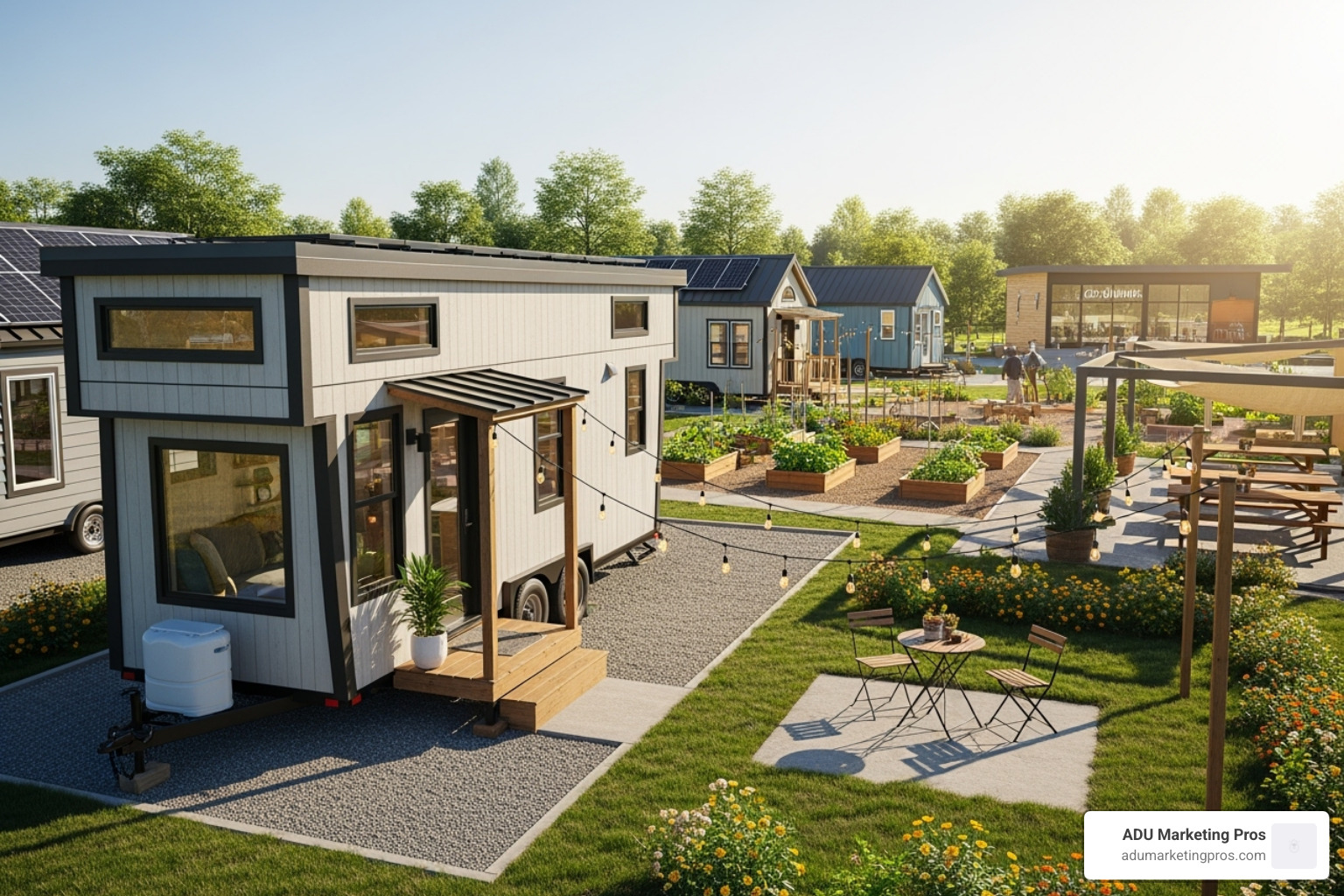
Utilities, Permits, and Taxes
These recurring and one-time administrative costs are non-negotiable and must be factored into your budget.
- Utility Hookups: If you’re placing your home on raw land, connecting to the grid is a major expense. This can range from a few hundred dollars if utilities are at the property line to over $20,000 if new lines, a well, or a septic system need to be installed. THOWs have an advantage here, as they use standardized RV hookups that are readily available at parks and communities.
- Building Permits: For a permanent foundation home, you’ll need building permits, which can cost $900 to $2,500 or more. This process involves submitting architectural plans and ensuring your build complies with local codes. For a THOW, you’ll typically bypass building permits but will need to register it as an RV.
- Taxes: A tiny home on a permanent foundation is considered real property and is subject to annual property taxes, which could be $200 to $1,000 or more depending on your local assessment. A THOW, classified as a vehicle, is subject to annual vehicle registration fees instead. You can find general estimates by checking State property tax rates.
Financing and Insurance
Securing the funds and protecting your investment can be different from the traditional homebuying process.
- Financing: Traditional mortgages are rarely an option, especially for homes under $50,000 or those on wheels. The most common financing routes are unsecured personal loans, RV loans (for certified THOWs), and builder financing offered directly by the construction company. Be prepared for lenders to require a significant down payment; some builders require deposits as high as $25,000 CAD (about $17,882 USD) to secure a build slot.
- Insurance: Standard homeowner’s insurance doesn’t typically cover tiny homes. You’ll need a specialized policy. For THOWs, this is often a form of RV insurance that covers the structure and your belongings, both when parked and in transit. For permanent tiny homes, you may need to find a provider specializing in non-traditional structures. This insurance is vital for protecting your investment against damage, theft, and liability.
Frequently Asked Questions About Tiny Home Prices
Starting on a tiny home journey brings up many questions, especially regarding the financial commitment. It’s a major life decision, and having clear, direct answers is essential for planning. Here, we address some of the most common queries about tiny home prices.
Is it cheaper to build or buy a tiny home?
This is the classic trade-off between time, money, and skill. There’s no single right answer, as it depends entirely on your personal resources and priorities.
- Building It Yourself (DIY): This is almost always the cheapest monetary option, with total costs ranging from $15,000 to $45,000. You save 30-60% by eliminating labor costs. However, the trade-off is a massive investment of your own time (typically 6-12 months of dedicated work) and the need for solid construction skills.
- Buying Used: This can be the fastest and most budget-friendly route to ownership. A pre-loved tiny home can range from $20,000 to $80,000. It allows you to enter the lifestyle quickly, but be sure to budget for a thorough inspection and potential repairs or renovations.
- Professional Build: This is the most expensive but most convenient option, costing $50,000 to $150,000 or more. You are paying for expertise, a streamlined process, and peace of mind. The home arrives certified, often with a warranty, and is ready for immediate occupancy.
How much does a luxury tiny home cost?
Luxury tiny homes demonstrate that downsizing doesn’t have to mean downgrading your quality of life. Prices for these high-end models typically start around $70,000 and can easily surpass $150,000, with some architectural marvels reaching $200,000+. The premium price tag is a result of:
- Custom Architecture: Unique designs by architects, complex rooflines, and bespoke structural elements.
- Premium Materials: High-end finishes like quartz or marble countertops, exotic hardwood floors, custom-milled cabinetry, and designer fixtures.
- Advanced Technology: Fully integrated smart home systems for controlling lights, climate, and security, plus top-of-the-line, energy-efficient appliances.
- Extensive Customization: Multi-functional, custom-built furniture, innovative storage solutions, and features like radiant floor heating or folding glass walls that blur the line between indoors and outdoors.
Are there ways to get a tiny home for under $20,000?
Yes, achieving the dream of a tiny home on a shoestring budget is possible, but it requires significant resourcefulness, flexibility, and a hands-on approach.
- DIY with Salvaged Materials: This is the ultimate cost-saving strategy. By sourcing free or reclaimed materials from demolition sites, online marketplaces, or restoration outlets, some builders have created functional homes for as little as $500 to $12,000.
- Shed-to-Home Conversions: A popular method involves buying a pre-built shed shell for a few thousand dollars and finishing the interior yourself. The total cost for a finished conversion typically ranges from $2,000 to $25,000.
- Buy a Small, Used Model: Patiently scouring online marketplaces can uncover deals on smaller, older pre-owned homes that may need some cosmetic work or minor repairs.
- Accept Simplicity: Stick to a simple, box-like design with a straightforward layout. Use basic, functional materials and avoid expensive custom features or high-tech gadgets.
- Consider a Shell Package: Purchase a professionally built exterior shell from a builder and finish the interior yourself over time as your budget allows. This ensures the structure is weatherproof and sound while you control the finishing costs.
Do tiny homes appreciate in value?
This is a complex question. A Tiny House on Wheels (THOW) is legally considered personal property, much like an RV or a vehicle. As such, it will likely depreciate in value over time. However, a well-maintained, high-quality build from a reputable builder may hold its value better than a typical RV.
A tiny home on a permanent foundation, however, is considered real estate. If it is legally permitted and part of a property in a desirable location, it has the potential to appreciate in value along with the land it sits on, just like a traditional house. Its value will be tied to the local real estate market, the quality of the build, and the value of the land itself.
How long does it take to build a tiny home?
The timeline for building a tiny home varies as much as the cost. A DIY build is the most time-intensive, often taking anywhere from 800 to 1,500+ hours of labor. For someone working on it during weekends and evenings, this can translate to a project lasting from 8 months to 2 years. For a professional builder, the process is much faster. Once you are past their waitlist, the actual construction in their facility typically takes 4 to 12 weeks. A prefabricated kit or shell can significantly shorten a DIY timeline, as the most complex structural work is already done.
Conclusion: Is a Tiny Home the Right Financial Move for You?
As we’ve explored in detail, there is no simple, one-size-fits-all answer to the question, “how much does a tiny home cost?” The final figure is a mosaic of your personal choices, influenced by everything from size and foundation to build type, material quality, and desired amenities. The initial tiny home prices are just the beginning; a realistic financial plan must also account for the significant ongoing costs of land, utilities, permits, taxes, and insurance.
Despite these complexities, one fact remains clear: tiny homes consistently offer a more financially accessible path to homeownership than traditional houses. For many, they are the key to escaping the cycle of renting or avoiding a decades-long mortgage. The secret to making a tiny home a successful financial move lies in diligent research and meticulous, comprehensive budgeting. You must look beyond the exciting prospect of the build itself and consider the entire financial ecosystem of ownership from the very beginning.
A well-built tiny home is not a temporary solution but a durable asset that can last 25 years or more, potentially leading to profound long-term financial freedom. By drastically reducing or eliminating housing debt, tiny living can open up income for savings, travel, investments, and a life rich with experiences rather than possessions.
At ADU Marketing Pros, we specialize in connecting innovative construction and architecture firms across California—from the tech hubs of San Jose and the San Francisco Bay Area to the sprawling communities of Los Angeles—with clients ready to accept small-scale housing solutions. While our expertise is in marketing, we firmly believe that an educated client is an empowered one. Understanding the financial realities is the critical first step in any successful building project. A tiny home is more than just a house; it’s a conscious investment in a more sustainable, affordable, and intentional lifestyle, one that often comes with the unexpected bonus of a strong, supportive community. To continue your journey, explore our resources on eco-friendly small homes and take the next step toward a smaller, smarter way of living.

